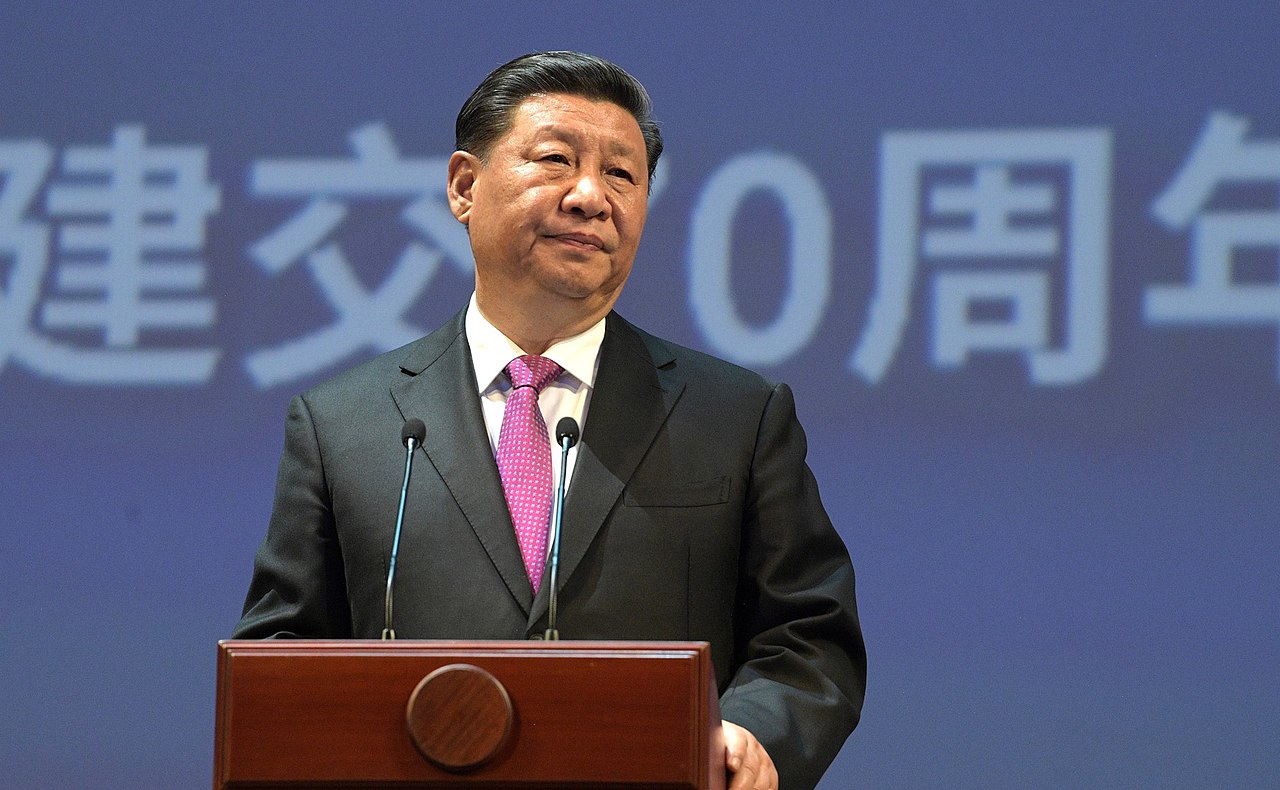This is the title of another conceptual article designed to scare the American establishment before the presidential election.

This is the title of another conceptual article designed to scare the American establishment before the presidential election.
The mouthpiece of the U.S. Council on Foreign Relations, the magazine Foreign Affairs (FA), has published an alarming article claiming that China is on the verge of overtaking the U.S. in military capabilities. It claims that the U.S. defense industry is lagging behind China’s, and even describes the American defense sector as «collapsing». «Defense spending in the PRC is growing rapidly, and its defense industry is operating at wartime levels», FA writes. «China is rapidly developing and producing weapons systems designed to deter the United States and, if deterrence fails, to emerge victorious in a great power war. China has already caught up with the United States in the mass production of weapons. In some areas, China now leads: it has become the world’s largest shipbuilder, with a capacity some 230 times that of the United States».
Between 2021 and early 2024, China’s defense industrial base produced over 400 advanced fighter jets and 20 large military ships, doubled the country’s stockpile of nuclear warheads, and more than doubled its stockpile of ballistic and cruise missiles. It also developed a new stealth bomber. During the same period, China increased its satellite launches by 50 percent. Currently, China is developing and acquiring weapons systems five to six times faster than the United States.
According to FA, this is how it looks in one defense sector. While the U.S. still operates the world’s largest and most advanced fleet of fifth-generation fighter jets, including the F-22 and F-35, China is catching up. Its largest military aircraft manufacturer, the Aviation Industry Corporation of China, produces nearly all fighter jets, transport and trainer aircraft, bombers, reconnaissance aircraft, unmanned aerial vehicles, and helicopters. The company operates 86 laboratories and applied research centers, as well as hundreds of subsidiaries and over 100 overseas branches. In 2023, Chinese companies produced more than 2,000 fourth- and fifth-generation combat aircraft, more than double the number produced in 2017. While the U.S. still leads with more than 3,350 fourth- and fifth-generation fighters produced in 2023, China is closing the gap. Beijing is also ramping up its production of drones, which it has used in exercises around Taiwan. China North Industries Group, or Norinco, recently unveiled a new kamikaze drone with a range of 124 miles and a cruising speed of 90 mph.
Of particular concern to Americans is that China introduced the DF-17 hypersonic glide vehicle ballistic missile in 2017 and continues to develop hypersonic technologies. Meanwhile, the U.S. faces challenges in this area.
Admiral John Aquilino, the former commander of the U.S. Indo-Pacific Command, described this military buildup as “the most extensive and rapid buildup since World War II. In short, all is lost.
In addition: «Today, four of the world’s top 10 companies by combined defense and non-defense revenues are Chinese, including two giants: the Aviation Industry Corporation of China and China State Shipbuilding. This marks a seismic shift from a decade ago, when no Chinese companies were among the top 100 global defense firms».
Looking only at defense revenues, China now has five companies in the world’s top 12, up from none a decade ago. Chinese defense firms now rival American giants such as Lockheed Martin, RTX (Raytheon), Boeing, Northrop Grumman, and General Dynamics. In Washington, it’s unclear how anyone can compete with these American giants.
All this, FA argues, has made China a «military heavyweight», while the U.S. defense sector is unable to keep up with this kind of development. It lacks resources and flexibility, with critical deficiencies, the magazine writes. «In short, the United States needs to pay much more attention and devote more resources to ensuring military readiness if it is to succeed in building a new arsenal of democracy», FA concludes.
But it’s not just weapons that make China dangerous. China’s People’s Liberation Army, according to FA, «has created a digital architecture that, in the event of war, will help the army coordinate its command, control, communications, computers, cyber, intelligence, surveillance, and reconnaissance systems, as well as deploy firepower using artificial intelligence, big data, and other new technologies».
All in all, this is a familiar and traditional approach. When any country begins to think seriously about its security, especially in the context of massive U.S. defense spending, Washington panics.
This is not the first such outpouring of concern. Similar articles appear frequently in the Western press. Not long ago, the Financial Times (FT) sounded the alarm about the U.S. defense backlog. It acknowledged, however, that the U.S. defense industry is experiencing a record production boom due to increased orders driven by aid packages to Ukraine, Israel and Taiwan. «But its future remains uncertain», the FT lamented. «The industry has seen a surge in funding, but this does not guarantee the sustained long-term growth needed to ensure the military readiness of the US and its partners». The paper cites military experts who point to numerous problems: labor shortages and a «fragile defense industrial base». In addition, the FT notes, the industry adopted a «lean manufacturing» strategy in the 1990s, in which products are made just in time and in the exact quantities needed. As a result, the five major defense contractors — Lockheed Martin, RTX, Northrop Grumman, Boeing and General Dynamics — quickly found their production lines running at full capacity.
In other words, there’s a lack of stability. What if the conflict in Ukraine ends, or Israel stops bombing Lebanon and Gaza? It would be good to make sure that people continue to destroy each other, but at a safe distance from the U.S. To prevent the American defense industry from collapsing, President Biden signed an order in June of this year to provide $95 billion in military aid to allies. It’s worth remembering that the U.S. military budget for the current year is $886 billion, many times more than China spends on defense.
Back to the FA publication and its conclusions: «China’s military buildup poses a serious threat to the United States, its allies, and partners, including Australia, Japan, the Philippines, South Korea, and Taiwan. China has thousands of missiles, some of which can strike U.S. territory. Others can target U.S. overseas bases that house American aircraft, runways, ships, fuel depots, ammunition depots, ports, command and control centers, and other infrastructure. China’s arsenal of anti-ship ballistic missiles threatens U.S. surface ships operating in the South and East China Seas and beyond». Assessing this array of Chinese military capabilities, U.S. Air Force Secretary Frank Kendall III bluntly stated: «China is preparing for war, particularly with the United States».
Given such a clear assessment of the threat, it is puzzling that the U.S. has not mobilized its own defense industrial base to keep up with the times. «The U.S. military does not have enough munitions and other equipment for a protracted war against China in the Taiwan Strait, the South China Sea, or the East China Sea — all areas where territorial disputes involving China and U.S. partners and allies such as Japan, the Philippines, and Taiwan could escalate into violence», FA writes.
It is difficult to judge how much of this article is true and how much is exaggerated. China is not prone to boasting about its defense successes. American journalists rely on intelligence data. Perhaps they know better. But judging by China’s achievements in the civilian sector, it is plausible to assume that it has comparable military potential. However, as the Chinese themselves believe, this potential is still not comparable to that of the U.S. This, by the way, is acknowledged in Washington, where it is known, for example, that the U.S. has about ten times more nuclear warheads than China. But even if the PRC had only a few warheads, it would still make the U.S. nervous. They continue to think in terms of the Cold War and power politics. Washington does not seem to understand that security is determined not only by the quantity and quality of weapons, but also by how much a country’s national interests are respected and how much sovereignty is guaranteed to those countries.
China is not preparing to go to war or attack anyone. This is clear from its foreign policy and defense strategy. At most, it is preparing to defend itself against the U.S., which is constantly attacking or dictating how others should live according to its rules.
FA also makes specific recommendations to the U.S. government on what to do. But in reality, the goal of such articles is to consolidate the U.S. elite and the public in the face of a terrible threat. The enemy is at the gates…









